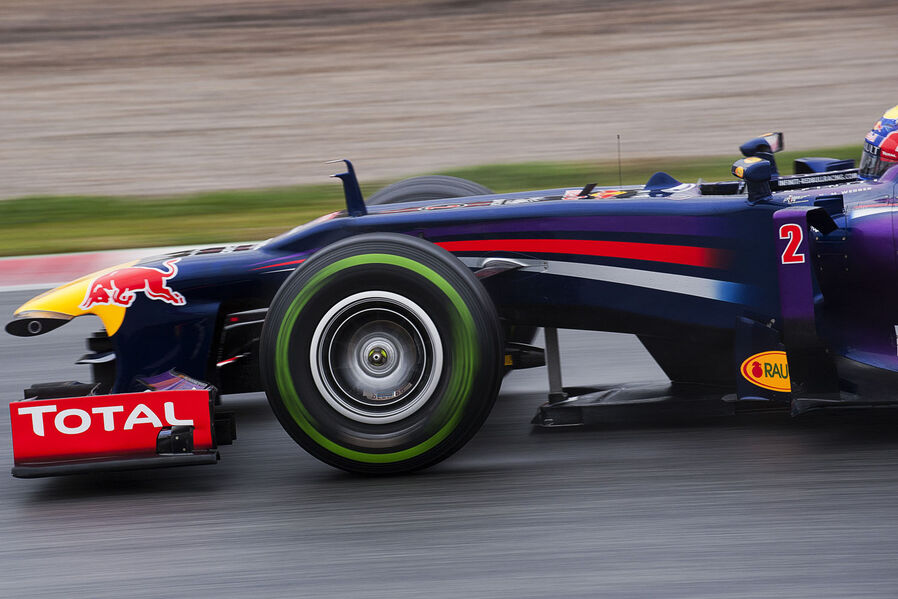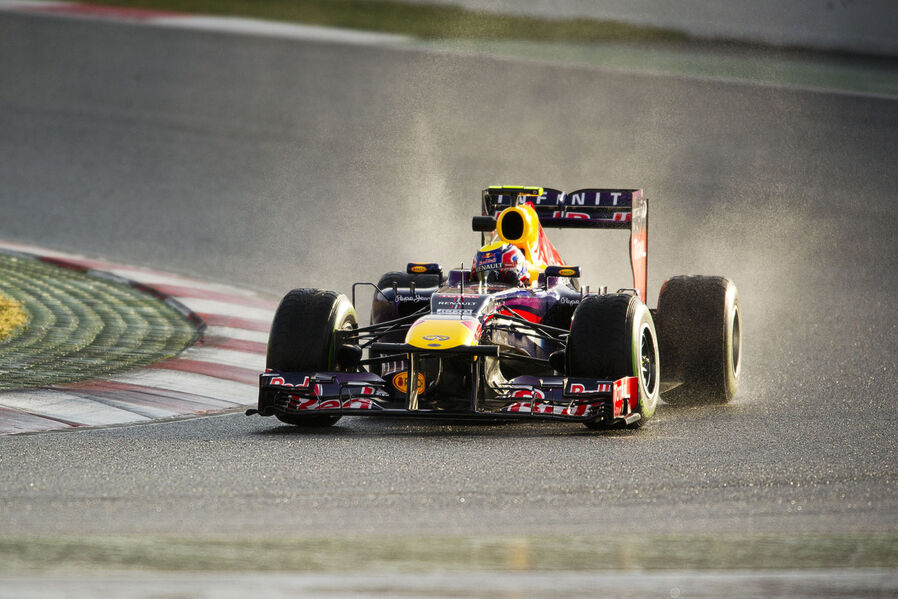Jackles-UK wrote:Looking at one of the above pictures something has occurred to me (I may be a little behind, apologies if I am!).
Does the exhaust ramp set-up as present on the Red Bull spread the exhaust flow to a wider area of the diffuser? Surely the flow will hit the floor ahead of the wheels and flatten out feeding more of the width. I thought of it like this; if you shoot a hosepipe at something through the air the flow is strong but formed in a narrow tube, if you shoot it at the floor however the same amount of water is coming out of the hose but the area it covers is far greater (albeit at a lower pressure). Could this be a feature of the RB9 (& RB8 I guess) where almost all of the diffuser if being fed by the exhaust rather than just the edges like the coanda systems run by most of the other teams?
Sorry mods, because somebody talk about this matter, I`m gonna re post here coz nobody answered my questions back on the designated thread :
http://www.f1technical.net/forum/viewto ... 62#p413862
Some questions (sorry for the poor aerodynamics knowledge):
1. Which is the better exhaust plume shape?
a)
Fan-shaped expansion of the exhaust gases (Red Bull solution):
The flow will hit the floor and flatten out feeding more of the diffuser on its width.
This solution has two (maybe three) advantages and three disadvantages:
- Advantages:
1) It`s less vulnerable to yaw effects or speed dependent variation of vortices and flow around the side pods and towards the diffuser edges, hence could be working over a wider range of speed and turns
2) There will probably be less rotation of the exhaust stream with or without vortices generators
3) Possible a nice side effect: the inner part of the exhaust stream might accelerate flow to the trailing edge of the outer part of the diffuser, improving expansion rate somewhat …
- Disadvantages:
1) The expansion of the exhaust flow means less energy, hence less down force induced.
2) It has a longer way along the floor before reaching the diffuser edge, hence less energy
3) The drag through the tunnels will simply be significantly higher than the drag through the open area below the exhaust pods à la McLaren
b)
Concentric or narrow expansion of the exhaust gases (McLaren solution):
It also has 3 advantages and 3 disadvantages, therefore it`s a close call …
Advantages:
- the transverse flow of around the side pods of the McLaren keeps the exhaust flow more focused, hence more energized
- short run towards diffuser, hence less energy loss
- this solution works better for the car stability under braking
Disadvantages:
- more influenced by the vortices generators - VG
- not very good predictability of the plume trajectory in various turns and various speeds
- needs 10% more fuel
2. Where is sweet spot for the exhaust plume to hit the floor?
3. It`s allowed to accelerate the exhaust plume?
I mean you could use:
a) slots into the bodywork before the exhaust duct (something like Hamilton was using in the second day of testing in Barcelona, when he run with an 2012 modify exhaust solution). With a better positioning this slot may increase the downwash effect …
b) you could also have side slots in the proximity of the exhaust duct (in addition to the above slot). All of these slots are in order to concentrate hence accelerate the exhaust plume.
c) could be used a particular nozzle for the exhaust duct or maybe better for the exhaust ramp? This nozzle (don`t know the name) was used by Mercedes in 2011.
4. This nozzle mentioned above could be used in front of the air intakes of engine or radiators? In order to increase the air flow velocity …
5. Rear brake wing lets acts like a flow conditioner to the exhaust plume? 

















